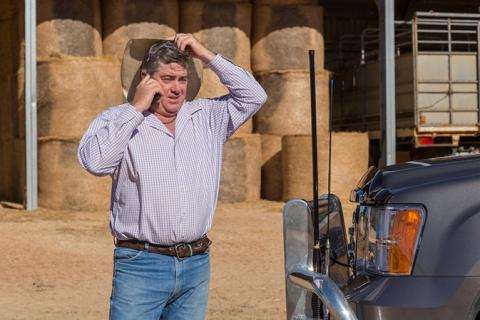While carbon farming has many co-benefits, it's also essential to consider the trade-offs and risks. Here’s an overview of some potential trade-offs and risks, using examples of carbon farming activities.
Suitability of location: features of the location (such as local rainfall and temperature patterns, soil type and land management history) determine the extent to which vegetation can be grown and soil carbon content can be improved and, therefore, the likely success of carbon farming activities. Similarly, there may be locations and practices where achieving improvements in soil carbon levels does not benefit agricultural production.
Compatibility with agricultural production: establishing trees on farms may reduce the land available for agricultural production. Carefully positioned plantings can complement agricultural production (such as if they provide windbreaks or are on less-productive land).
Biodiversity impacts: decisions about, for example, which trees to plant and their location and layout of tree plantings should consider impacts on biodiversity.
Water availability: adopting carbon farming activities that need more water (such as irrigated crops) may depend on water availability.
Permanence of carbon storage: storing carbon in vegetation and soil requires ongoing management. Fire, drought or management changes could lead to losses of stored carbon. Managing this risk in carbon markets requires a long-term — many decades — commitment to maintain carbon stores and restore any losses, with implications for land, financial and succession planning.
Legal considerations: legal aspects of participating in carbon markets may include land use agreements, complying with legislation and contracts.
Financial factors: carbon farming can provide an additional source of income from the sale of ACCUs and on-farm productivity gains. Carbon market participation involves costs in addition to those incurred in investing in new equipment and changing practices. Other costs may include obtaining legal and financial advice, estimating emissions reductions and carbon storage, and monitoring, reporting and auditing. The time commitments involved also need to be considered. There is likely to be a lag between paying initial costs and earning revenue from the sale of ACCUs. This is particularly so for carbon storage activities, where building carbon levels in vegetation and soils takes time and can be subject to variability. Where carbon farming is conducted without participating in the ACCU Scheme, costs of making new purchases and changing practices need to be weighed up against benefits such as improved production.
Considerations for fire management activities:
- the need to provide more detailed knowledge about local ecosystems, appropriate timing, fire behaviour and ecological responses to people undertaking fire management
- the need for community engagement and education about what constitutes ‘good’ and ‘bad’ burning
- getting the timing and intensity of burning right
- the potential for fires to escape
- air quality concerns from smoke
- impacts on non-native species on which cultural burning may have different ecological effects
- the need for expert knowledge about vegetation, weather patterns and fire behaviour.

